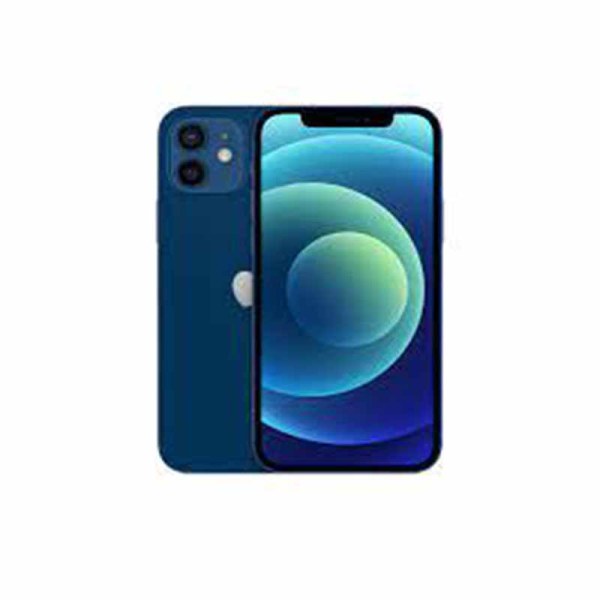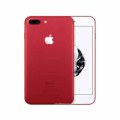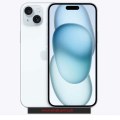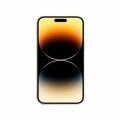- Whatisprice
- What is Today Mobile Price in Pakistan
- Mobiles
- Apple iPhone 12 Mini
Apple iPhone 12 Mini Price & Specifications



Apple iPhone 12 Mini Specs & All Features
General
| Device Type | Apple smartphone |
| Model | A2399, A2176, A2398, A2400, A2399 |
| Announced | 2020, November 13. |
| Released | 2020, November 13. |
| Status | Available |
| Price | 156999 |
Design
| Type <strong>Design Type</strong> called form factor refers to a mobile phone's size, shape, and style as well as the layout and position of major components of phone. There are three major form factors seen in mobile phones => bar phones, folding phones and sliding phones. | Bar |
| Dimensions | 131.5 x 64.2 x 7.4 mm (5.18 x 2.53 x 0.29 in) |
| Weight | 135 g (4.76 oz) |
| Protection | Glass front (Gorilla Glass), glass back (Gorilla Glass), aluminum frame |
| Colors | Black, White, Red, Green, Blue, Purple |
Network
| 2G Network |
GSM 850 / 900 / 1800 / 1900 - SIM 1 & SIM 2 (dual-SIM) CDMA 800 / 1900 |
| 3G Network |
HSDPA 850 / 900 / 1700(AWS) / 1900 / 2100 CDMA2000 1xEV-DO |
| 4G Network |
1, 2, 3, 4, 5, 7, 8, 12, 13, 14, 17, 18, 19, 20, 25, 26, 28, 29, 30, 32, 34, 38, 39, 40, 41, 42, 46, 48, 66, 71 - A2176 1, 2, 3, 4, 5, 7, 8, 12, 13, 17, 18, 19, 20, 25, 26, 28, 30, 32, 34, 38, 39, 40, 41, 42, 46, 48, 66 - A2399, A2400 1, 2, 3, 4, 5, 7, 8, 11, 12, 13, 14, 17, 18, 19, 20, 21, 25, 26, 28, 29, 30, 32, 34, 38, 39, 40, 41, 42, 46, 48, 66, 71 - A2398 |
| 5G Network 5G Network | 1, 2, 3, 5, 7, 8, 12, 20, 25, 28, 38, 40, 41, 66, 71, 77, 78, 79, 260, 261 Sub6/mmWave - A2176, 1, 2, 3, 5, 7, 8, 12, 20, 25, 28, 38, 40, 41, 66, 77, 78, 79 Sub6 - A2398, A2399, A2400 |
| SIM <strong>SIM</strong> (Subscriber Identity Module) is a small card that contains mobile network subscriber's account information. This allows the phone using the card to attach to a mobile network. The SIM card is most commonly associated with GSM and UMTS mobile networks. Moving a SIM card from one phone to another allows a subscriber to switch mobile phones without having to contact their mobile network carrier. SIM cards can also be used by a phone to store limited amounts of data, such as phone numbers and text messages. | Nano SIM |
| Dual SIM | Single SIM (Nano-SIM and/or eSIM) or Dual SIM (Nano-SIM, dual stand-by) IP68 dust/water resistant (up to 6m for 30 mins) Apple Pay (Visa, MasterCard, AMEX certified) |
Display
| Display Type <strong>Display Technology => </strong> A number of display technologies and types used in mobile phones => TFT (Thin Film Transistor), IPS (In-Place Switching), OLED (Organic Light Emitting Diode), AMOLED (Active-Matrix Organic Light-Emitting Diode), Super AMOLED (an even advanced version of AMOLED), Resistive Touchscreen (Resistive touchscreens contain two layer of conductive material with a very small gap between them which acts as a resistance), Capacitive Touchsceen (Capacitive touchscreen technology consists of a layer of glass coated with a transparent conductor) | Super Retina XDR OLED, HDR10, Dolby Vision, 625 nits (HBM), 1200 nits (peak) |
| Size | 5.4 inches, 71.9 cm2 (~85.1% screen-to-body ratio) |
| Resolution | 1080 x 2340 pixels, 19.5:9 ratio |
| Display Colors <strong>Display Colors</strong> is refers to the number of different shades of colors that the screen is capable of displaying => 64K colors, 256K colors and 16 million colors, Obviously 16M is highest available range of colors and better than others. | 1 Billion colors |
| Pixel Density <strong>Pixel Density (PPI)</strong> is refers to the concentration of pixels on a particular display, measured in pixels per inch (ppi). Pixel density is calculated by dividing the diagonal pixel resolution of a display by its diagonal size, higher pixel density better display quality. | ~476 ppi density |
| Touch Screen | Yes multi touch |
| Display Protection <strong>Display Protection => </strong> Gorilla Glass is a special alkali-aluminosilicate glass shield with exceptional damage resistance that helps protect mobile displays from scratches, drops, and bumps of everyday use, It is always better to go for a smartphone with Gorilla Glass for that added protection and peace of mind. | Glass front (Gorilla Glass), glass back (Gorilla Glass), aluminum frame |
| Features |
HDR10, Dolby Vision, 625 nits (HBM), 1200 nits (peak) Scratch-resistant ceramic glass, oleophobic coating Wide color gamut True-tone |
| Secondary Display | - |
Media
| Audio Playback | Yes, with stereo speakers |
| Video Playback | Yes |
| Video Out | Yes |
| FM Radio | No |
| Alert Types | All |
| Ring Tones | Build-in |
| Loudspeaker | Yes, with stereo speakers |
| Handsfree | No |
Camera
| Main Camera | Dual camera: 12 MP, f/1.6, 26mm (wide), 1.4µm, dual pixel PDAF, OIS 12 MP, f/2.4, 13mm, 120˚ (ultrawide), 1/3.6" |
| Image | Dual-LED dual-tone flash, HDR (photo/panorama) |
| Video | 4K@24/30/60fps, 1080p@30/60/120/240fps, HDR, Dolby Vision HDR (up to 30fps), stereo sound rec. |
| Camera Features | Dual-LED dual-tone flash, HDR (photo/panorama), 4K@24/30/60fps, 1080p@30/60/120/240fps, HDR, Dolby Vision HDR (up to 30fps), stereo sound rec. |
| Flash <strong>Flash Light => </strong> There is commonly two types of flash lights are used in camera mobile phones, LED Flash (LED flash offers lower power consumption with drive circuitry that takes up very little room, LEDs can be strobed faster than any other light source), Xenon Flash (xenon flash produces an extremely intense full-spectrum white light for a very short duration) | Dual-LED dual-tone flash |
| Front Camera Front Camera | 12 MP, f/2.2, 23mm (wide), 1/3.6" SL 3D, (depth/biometrics sensor), HDR, 4K@24/30/60fps, 1080p@30/60/120fps, gyro-EIS |
Software
| Operating System <strong>OS => </strong> Every computer system run on a base software called Operating System (OS). Operating System controls all basic operations of the computer (such as smartphone, PDAs, tablet computers and other handheld devices). The Operating System allows the user to install and run third party applications (apps), apps are used to add new functionality to the device. | iOS 14.1, upgradable to iOS 15.3 |
| User Interface <strong>UI</strong> or user interface of a device is the look and feel of the on-screen menu system. How it works, its color scheme, how it responds to button presses, all of these things are part of the user interface. | - |
Hardware
| Chipset <strong>Chipset</strong> is a group of integrated circuits designed to perform one or a more dedicated functions, often with real time computing constraints, Popular smartphones are equipped with more advanced embedded chipsets that can do many different tasks depending on their programming. | Apple A14 Bionic (5 nm) |
| CPU <strong>CPU</strong> (Central Processing Unit) mostly known as processors, CPU processes instructions in order to carry out certain functions that make your device operate properly. Processors are often described as the brain of computers, smartphones and tablets, Smartphones and tablets rely on processors to carry out their every task, Processors are an incredibly important factor in selecting any type of computing device, including your smartphone. | Hexa-core (2x3.1 GHz Firestorm + 4x1.8 GHz Icestorm) |
| GPU <strong>GPU</strong> (Graphics Processing Unit) is a single-chip processor designed to rapidly manipulate and alter memory to accelerate the creation of images in a frame buffer intended for output to a display, This includes things such as lighting effects, object transformations, and 3D motion. | Apple GPU (4-core graphics) |
| RAM (Memory) | 4 GB RAM |
| Internal Storage <strong>Internal Storage</strong> is a data storage space (flash memory) mostly used in smartphones, tablets and other electronic devices where operating system, apps, music, photos, videos, files and other user data Is stored. | 64/128/256GB Built-in |
| Card Slot <strong>Memory Card Slot</strong> is a special slot for inserting a memory card. Memory cards allow you to expand the phone's built-in memory, A memory card (sometimes called a flash memory card or a storage card) is a small storage medium used to store data such as text, pictures, audio, and video, for use on small, portable or remote computing devices such as mobile phones, mp3 players, digital cameras. | No |
| Sensors <strong>Sensors</strong> are electronic components that detects and responds to some type of input from the physical environment. The specific input could be light, heat, motion, moisture, pressure and location, The output is generally a signal that is converted to use in computing systems, a location sensor, such as a GPS receiver is able to detect current location of your electronic device. |
Face ID, accelerometer, gyro, proximity, compass, barometer Siri natural language commands and dictation Ultra Wideband (UWB) support |
Connectivity
| Bluetooth <strong>Bluetooth</strong> is a wireless communications technology for exchanging data between mobile phones, headsets, computers and other network devices over short distances without wires, Bluetooth technology was primarily designed to support simple wireless networking of personal consumer devices. | 5.0, A2DP, LE |
| Wi-fi <strong>Wi-Fi</strong> is a popular wireless networking technology using radio waves to provide high-speed network connections that allows devices to communicate without cords or cables, Wi-Fi is increasingly becoming the preferred mode of internet connectivity all over the world. | Wi-Fi 802.11 a/b/g/n/ac/6, dual-band, hotspot |
| Wi-fi Hotspot | Yes |
| USB | Lightning, USB 2.0 |
| GPS <strong>GPS</strong> The Global Positioning System is a satellite-based radio navigation system, GPS permits users to determine their position, velocity and the time 24 hours a day, in all weather, anywhere in the world, In order to locate your position, your device or GPS receiver must have a clear view of the sky. | Yes, with A-GPS, GLONASS, GALILEO, QZSS |
| NFC <strong>NFC</strong> (Near field communication) is a set of standards for smartphones and similar devices to establish peer-to-peer radio communications with each other by touching them together or bringing them into proximity, usually no more than a few inches. | Yes |
Data
Battery
| Battery Type <strong>Battery Type => </strong> Cell phones run on various kinds of batteries depending on the manufacturer, phone size or shape and features. There are basically four types of cell phone batteries => Lithium Polymer, Lithium Ion, Nickel Metal Hydride and Nickel Cadmium. | Li-Ion (Lithium Ion) |
| Capacity <strong>Battery Capacity</strong> is a measure (typically in Amp-hr) of the charge stored by the battery, and is determined by the mass of active material contained in the battery. The battery capacity represents the maximum amount of energy that can be extracted from the battery under certain conditions. | Li-Ion 2227 mAh, non-removable (8.57 Wh), Fast charging 20W, 50% in 30 min (advertised) USB Power Delivery 2.0 MagSafe wireless charging 15W Qi magnetic fast wireless charging 7.5W |
The Apple iPhone 12 Mini packs a punch with its impressive specs and sleek design. Let’s delve into what makes this phone a standout choice in its category.
Apple iPhone 12 Mini Design and Display:
The iPhone 12 Mini measures 131.5 x 64.2 x 7.4 mm and weighs 135g, making it compact and lightweight. It comes in attractive colors like Black, White, Red, Green, and Blue, appealing to various tastes.
Apple iPhone 12 Mini Performance and Speed:
Powered by the Apple A14 Bionic chip, this phone ensures smooth performance with its Hexa-core CPU. Whether you’re browsing, gaming, or multitasking, the iPhone 12 Mini delivers seamless speed without lag.
Apple iPhone 12 Mini Camera Capabilities:
Capture every moment with precision using its dual 12 MP rear cameras. The main camera features f/1.6 aperture for detailed shots, while the ultrawide lens offers a broader perspective. It supports 4K video recording with Dolby Vision HDR, ensuring stunning video quality.
Apple iPhone 12 Mini RAM and Memory:
With 4GB of RAM and options for 64GB, 128GB, or 256GB storage, the iPhone 12 Mini provides ample space for apps, photos, and videos. Its NVMe storage ensures fast read and write speeds, enhancing overall performance.
Apple iPhone 12 Mini Connectivity and Features:
Stay connected with Wi-Fi 6 and 5G capability for fast internet speeds. It supports dual SIM (Nano-SIM and eSIM), giving flexibility in choosing network providers. Other features include Face ID, Accelerometer, Gyroscope, and Barometer for enhanced usability.
Apple iPhone 12 Mini Display Quality:
Enjoy vibrant visuals on the 5.4-inch Super Retina XDR OLED display, boasting a resolution of 1080 x 2340 pixels. It offers HDR10, True Tone, and up to 1200 nits peak brightness, ensuring a vivid viewing experience even in bright sunlight.
Apple iPhone 12 Mini Battery and Charging:
The iPhone 12 Mini features a 2227 mAh battery that supports fast charging, providing up to 50 hours of music playback or up to 15 hours of standby time. It also supports Qi wireless charging, making it convenient to charge on the go.
Apple iPhone 12 Mini Price and Reviews:
Priced competitively at Rs. 157,399 (approximately $710), the iPhone 12 Mini has garnered an average rating of 4.6 stars based on user reviews. Users praise its compact size, powerful performance, and impressive camera capabilities.
In conclusion, the Apple iPhone 12 Mini stands out as a versatile choice for users seeking a compact yet powerful smartphone. With its robust performance, advanced camera features, and sleek design, it’s a worthy investment for tech enthusiasts and casual users alike.
Whether you’re in Pakistan or India, the iPhone 12 Mini offers everything you need in a modern smartphone, blending cutting-edge technology with user-friendly design














